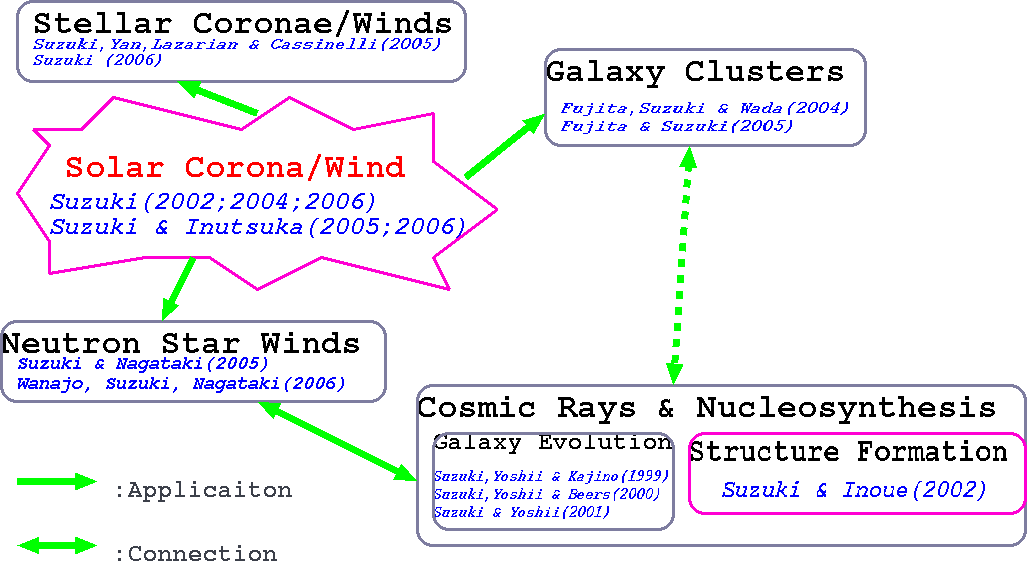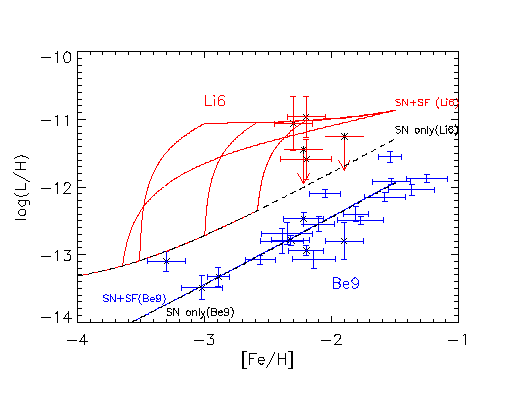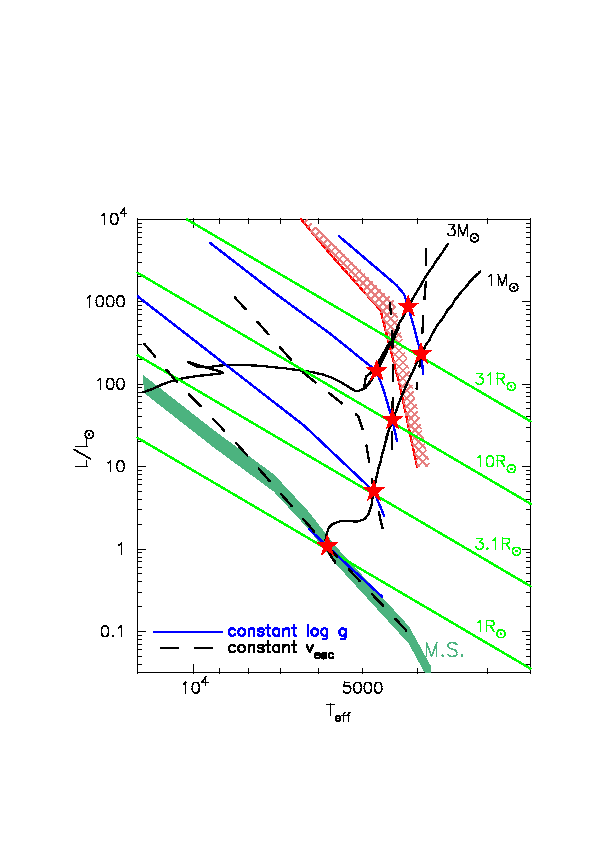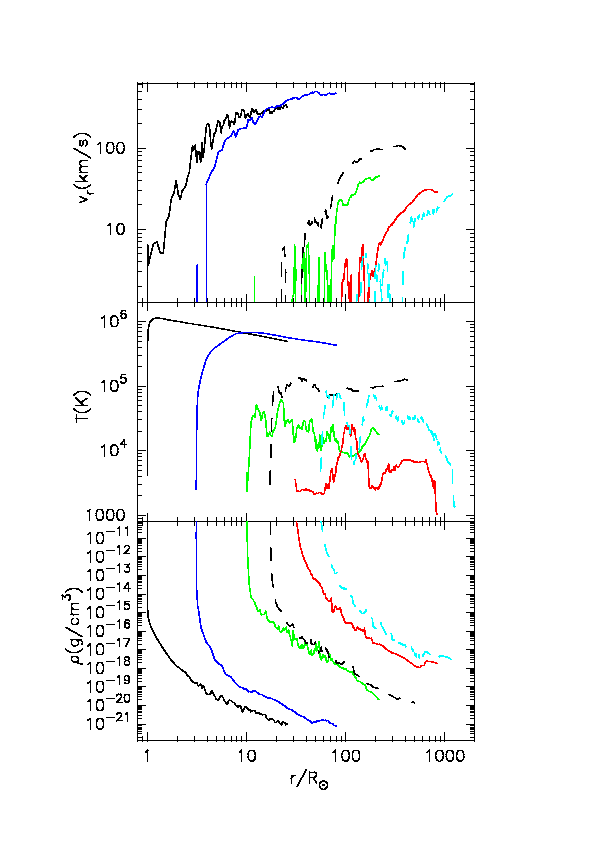It is generally believed that the origin of the energy to heat the corona
and accelerate the solar wind lurk in the turbulent convective motions
beneath the photosphere. The problem is how to lift up the energy to
the corona in a shape of non-thermal (wave or magnetic) energy and let
it dissipate at the appropriate position. With respect to heating and
acceleration in astrophysical plasma, I have following results so far.
Acoustic waves have not been considered as a major source in the solar
coronal heating due to their too dissipative character. However, generation
of slow MHD (acoustic) waves by various transient events has been confirmed
from both theoretical and observational sides. I have inspected a role
of such acoustic waves, generated not at the photosphere but in the corona,
in the coronal heating and the solar wind acceleration. They can easily heat
the corona over a million degree, whereas they can not heat the outer
corona to the observed level.
(Suzuki 2002)
As a cooperative process with the slow MHD waves, I have studied transverse
waves. Among the transverse waves traveling along with the magnetic field
line, linearly polarized Alfven waves are compressive when one considers
the non-linear terms. They steepen to form fast switch-on shock trains and
propagate upwardly with heating and accelerating the ambient gas.
However, the dissipation is more gradual than the slow MHD waves. As a
result, they can effectively heat the outer corona and accelerate the
solar wind. Based on these facts, I have performed time-independent
calculation of 1-D and two-temperature (p + e) corona from the
bottom of the transition region to 1AU to examine the roles of both
waves. The slow MHD waves heat the lower corona to increase the density
there and possibly work in the low-speed solar wind from the mid to
low latitude corona, while the linearly polarized Alfven waves could
effectively accelerate the solar wind and play a dominant part in the
high-speed wind from the polar holes during the low activity phase.
(Suzuki 2004)
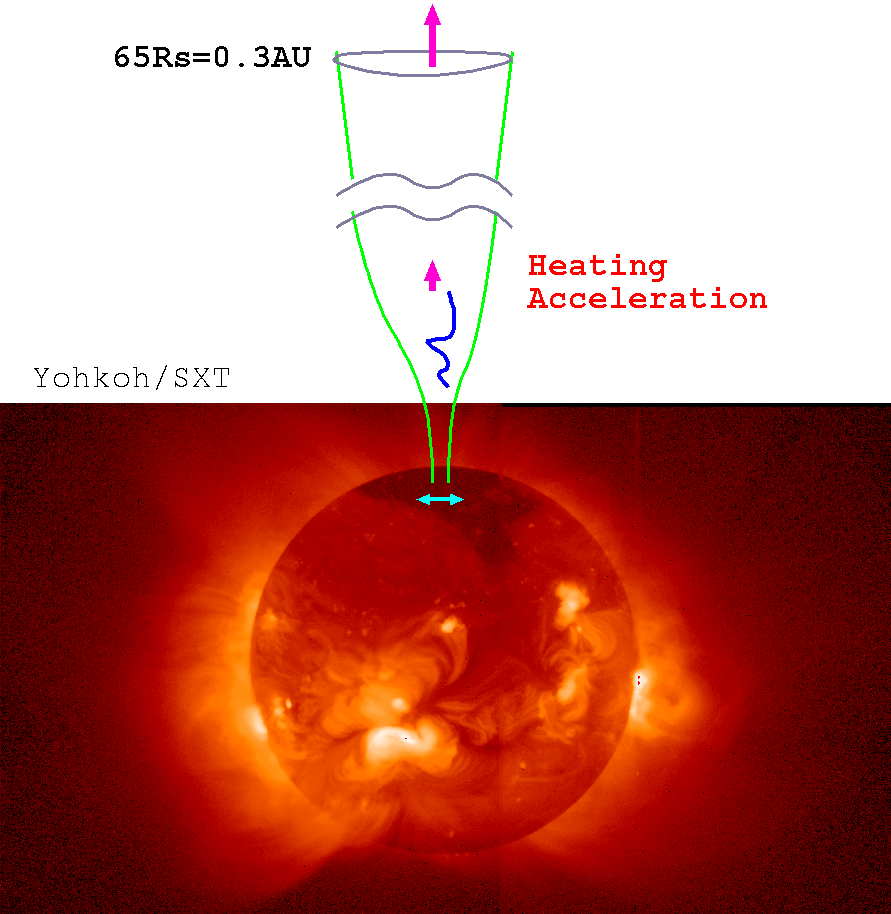
Solar Wind from Coronal Hole (Open Field Region)
So far our works were model calculations based on the steady-state
approximation.
However, waves in the solar (and stellar) corona and wind inevitably
become nonlinear; amplitude of up-going waves are amplified to compensate
the decrease of the background atmosphere. Then, the amplitude eventually
exceeds the phase speed, namely nonlinear wave. Under the steady-state
condition, it is almost impossible to treat varieties of nonlinear processes
in a self-consistent manner.
We started time-dependent MHD simulations with prof. Inutsuka when I
was in Kyoto university.
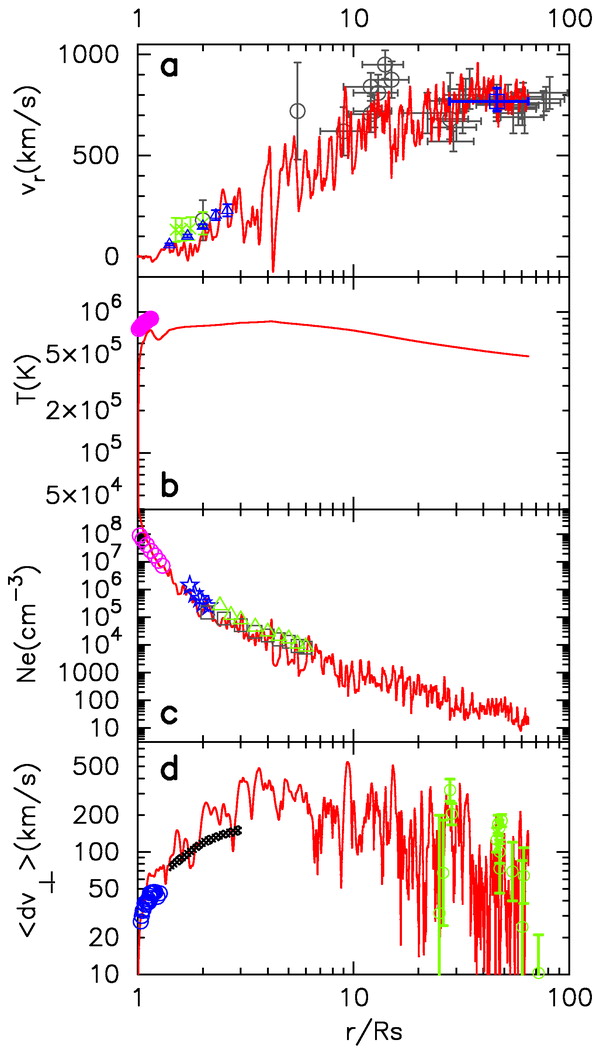
Comparison of the simulation result (red lines) with
the observed data; our forward simulation naturally explains the
observed high-speed solar wind.
By performing the MHD simulation which covers the broadest region
from the photosphere to a sufficiently outer region.
We have shown that
the coronal heating and solar wind acceleration in
open magnetic field regions are natural consequences of turbulences in
the surface convective layer
(Suzuki & Inutsuka 2005).
Alfven waves which are generated by the surface perturbation propagate
outwardly and heat and accelerate the solar coronal plasma by the dissipation
through nonlinear generation of compressive waves and reflection.
We have, for the first time, shown that static and cool atmosphere is
naturally heat up to the coronal temperature (1MK) and accelerate
up to 800km/s by the direct numerical simulation.
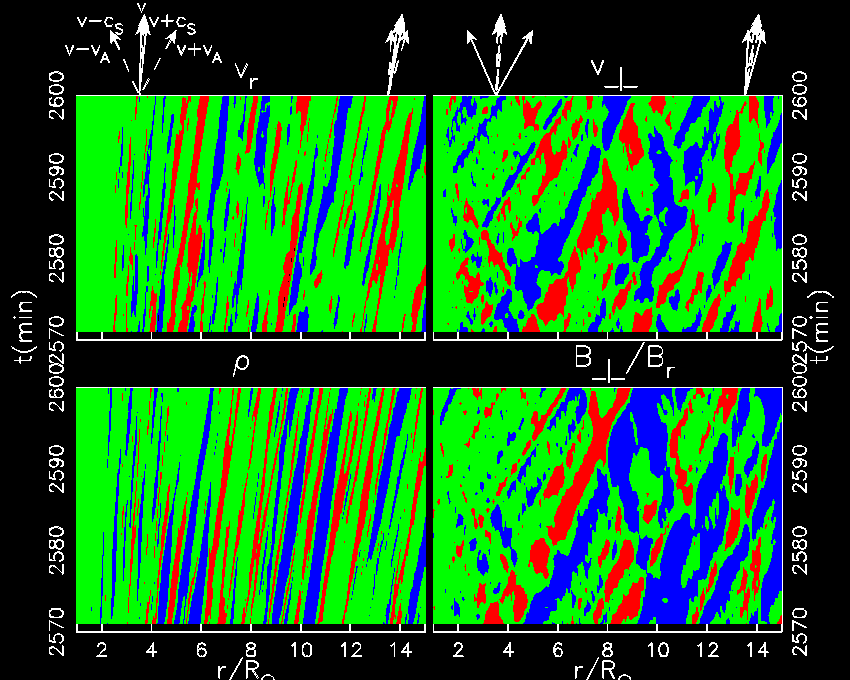
Time (vertical) - distance (horizontal) diagrams.
Red and blue regions indicate amplitudes in excess of certain thresholds.
Slopes of these patterns correspond to propagation speeds.
In the right panels outgoing and incoming Alfven waves are observed,
while in the left panels, slow MHD (sound) waves are observed.
Furthermore, we have simulated solar winds in various coronal holes with
different magnetic field strength and configuration and perturbation speeds.
We pointed out that the nonlinear Alfven waves can explain (i) both fast
and slow solar winds in a unified manner (ii) disappearance events of
the solar wind which are sometimes observed
(Suzuki & Inutsuka 2006).
I also applied our simulation results to the variation of solar wind speeds
(300 - 800km/s) in the vicinity of the earth.
I showed that dissipation of the nonlinear Alfven waves can explain the
observed result that the solar wind speed is correlated with a ratio of
magnetic field strength at the surface to an expansion factor of a flux tube
(Suzuki 2006).
